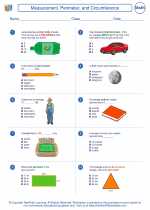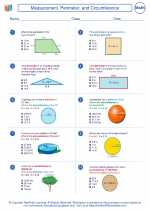Pyramid
A pyramid is a three-dimensional geometric shape that tapers to a point at the top, called the apex, and has a polygonal base. The base can be any polygon, but the most common pyramids have a square base (square pyramid) or a triangular base (triangular pyramid).
Types of Pyramids
There are different types of pyramids based on the shape of their base:
- Square Pyramid: A pyramid with a square base and four triangular faces.
- Triangular Pyramid: A pyramid with a triangular base and three triangular faces.
- Pentagonal Pyramid: A pyramid with a pentagonal base and five triangular faces.
- Hexagonal Pyramid: A pyramid with a hexagonal base and six triangular faces.
- ... and so on, based on the number of sides in the base polygon.
Formulas for Pyramids
Here are some important formulas related to pyramids:
Surface Area of a Pyramid = Base Area + 1/2 * Perimeter of Base * Slant Height
Volume of a Pyramid = (1/3) * Base Area * Height
Example Problems
Let's solve some example problems to understand the concepts better:
Example 1: Find the surface area of a square pyramid with a base side length of 5 cm and a slant height of 8 cm.
Solution:
Base Area = side length * side length = 5 * 5 = 25 cm2
Surface Area = 25 + 1/2 * 4 * 8 = 25 + 16 = 41 cm2
Example 2: Calculate the volume of a triangular pyramid with a base area of 36 m2 and a height of 9 m.
Solution:
Volume = (1/3) * 36 * 9 = 108 m3
Study Guide
When studying pyramids, make sure to focus on the following key points:
- Understanding the different types of pyramids and their properties.
- Memorizing the formulas for calculating the surface area and volume of pyramids.
- Practicing example problems to apply the formulas and understand the concepts better.
Remember to pay attention to the units of measurement and ensure consistency when using the formulas. With enough practice and understanding, you'll master the concept of pyramids in no time!
.◂Math Worksheets and Study Guides Seventh Grade. Measurement, Perimeter, and Circumference

 Worksheet/Answer key
Worksheet/Answer key
 Worksheet/Answer key
Worksheet/Answer key
 Worksheet/Answer key
Worksheet/Answer key
